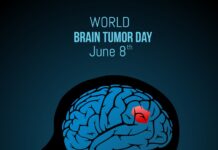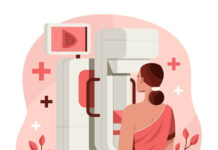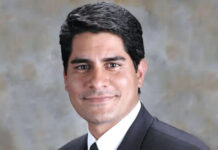Abstract
A thorough study of human anatomy is mandatory to become a competent medical practitioner. Anatomy is the first subject taught in medical education. Anatomy deals with the study of the structural elements and their interrelationships in the human body. It gives future medical professionals a thorough insight into the complex interactions between the various tissues and organ systems that make up the human body. Medical professionals who have a thorough knowledge of anatomy are better able to diagnose and treat patients, improving both patient care and safety. So, it can be easily interpreted that anatomy is very important in producing skilled medical professionals.
Keywords: Anatomy, Cadaver, Curriculum, Human body, Medical Student.
Conflict of Interest: None declared
Source of Support: None declared
Introduction
Medical education is a step-by-step process wherein students are first taught basic medical science, which comprises anatomy, physiology, and Biochemistry.[1] Based on the sound knowledge of these basic science medical students, a proficient medical doctor is made. A thorough study of human anatomy is mandatory to become a competent medical practitioner. [2] Anatomy deals with the study of the structural elements and their interrelationships in the human body. It gives future medical professionals a thorough insight into the complex interactions between the various tissues and organ systems that make up the human body.[3] This article explores the role of anatomy in creating medical professionals by looking at its importance in clinical practice, be it in any stream of medical science.
Anatomy: The Foundation of Medical Education
Anatomy is the first subject taught in medical education. It gives medical students a thorough knowledge of how the human body is composed, from microscopic components like cells and tissues to macroscopic ones like bones, muscles, and organ systems. Anatomy serves as the cornerstone for all other subjects of medical knowledge. By placing a strong emphasis on direct observation and the dissection of human cadavers, Andreas Vesalius, referred to as the “Father of Anatomy,” revolutionized the way that anatomy was taught.[4]
Teaching Anatomy: An art
The teaching of anatomy is quite tricky. Though they are indispensable, anatomy instructors are sometimes unrecognized heroes in the field of medical education. Teachers work to make difficult anatomical concepts understandable to learners with a variety of tactics. Students are engaged and assisted in applying their anatomical knowledge to practical situations through the use of interactive methodologies, case based learning, and problem-solving activities. This is the basis of the current medical education curriculum. Anatomy educators play a pivotal role in fostering a deep appreciation for the subject. [5] Students are motivated to pursue their education further with more vigor when they are taught by passionate professionals who emphasize the applied aspect of anatomical
knowledge with clinical relevance.
1 Senior Resident, Department of Community Medicine, B.R.D. Medical College, Gorakhpur, Uttar Pradesh, India
2 Associate Professor, Department of Anatomy, BRD Medical College, Gorakhpur, UP, India
Corresponding author: Dr. Imran Ahmed Khan,Senior Resident, Department of Community Medicine, B.R.D. Medical College, Gorakhpur, Uttar
Pradesh, India. Email : ikhan0046@gmail.com
Development of Critical Skills Since the Start
Anatomy classes encourage the development of analytical abilities that are crucial for medical professionals. Spatial thinking is one such ability, which entails mentally imagining the three-dimensional connections between anatomical parts.[6]This skill is essential while analyzing imaging data, organizing operations, and carrying out procedures. In addition, studying anatomy requires and strengthens your ability to observe and pay attention to fine details. Medical students develop their capacity to spot even minute variances and anomalies by carefully examining anatomical structures during cadaveric dissections.[7] These skills later translate into clinical settings, where doctors must be able to recognize signs of illness or injury that might otherwise be overlooked in the first instance.
Ethical Considerations and Challenges in Anatomy Education
The acquisition of human cadavers for dissection poses ethical issues about permission, respect for the departed, and the cultural nuances of post-mortem procedures. Despite the fact that anatomy is unquestionably important to medical education, it’s critical to address the ethical issues related to the acquisition of cadavers for study purposes. By procuring cadavers in legal and moral ways and making sure they are handled with the highest care during dissection and research, anatomists and medical schools must follow ethical norms.[8,9] Furthermore, the anatomical information that medical students need to grasp within a limited time frame can be overwhelming, as new terminologies may be difficult to learn for most mediocre students. Curriculum designers work hard to strike a balance between the depth of knowledge and the breadth of other medical subjects. Integrating anatomy teaching with other disciplines, such as physiology and pathology, can enhance students’ understanding, but at times pose difficulty in scheduling classes.
Use of Advanced Technology in Anatomy Teaching
Moving ahead to the present, anatomy is still a key component of medical education. In the era of Artificial Intelligence and Machine Learning, its use in studying Anatomy is not an exception. Technology developments have changed a lot about how anatomy is taught and studied. Students can use cutting-edge technologies like virtual cadaver dissection software, 3D anatomical models, and augmented reality apps in addition to more conventional methods like traditional corpse dissection to study and comprehend the human body.[10] By manipulating virtual anatomical components and simulating surgical procedures, these technologies provide students with engaging and immersive learning experiences. These advancements not only improve student comprehension but also close the knowledge gap between theory and application.
Integration into Contemporary Medical Practice
Since a full understanding of the body’s architecture is necessary for precise diagnosis, efficient treatment, and surgical expertise, the integration of anatomical knowledge into medical practice is a must. [11,12] A sound knowledge of anatomy is a prerequisite to practicing any stream of medical science. It is required to correlate symptomatology with ongoing underlying pathology, target malfunctioning organs of the body, and help in reaching the correct diagnosis. Medical professionals in clinical settings rely on their anatomy-based understanding to interpret medical imaging data, pinpoint areas of concern, and interact successfully with patients and other healthcare providers. In order to navigate complicated operations, reduce risks, and improve patient outcomes, surgeons in particular strongly rely on their anatomical expertise. Additionally, anatomy has a function that goes beyond only clinical use. Medical researchers use insights from anatomical investigations to increase our knowledge of illnesses, provide cutting-edge treatments, and look for new opportunities for medical advancements. A command of anatomy is helpful in interpreting diagnostic imaging, including X-rays, CT scans, and MRIs, which enables clinicians to identify anomalies and develop effective treatment plans.
A thorough knowledge of anatomy is a must for safely anesthetizing a patient, placing a precise block, and conducting various intensive care procedures.[13] Anatomy plays a crucial role in the surgical specialty. By using exact anatomical knowledge, surgeons may
perform operations on complex structures with fewer complications and a good outcome. For instance, in order to successfully conduct coronary artery bypass surgery, a cardiac surgeon needs to have a thorough knowledge of the blood vessels of the heart and how
they are connected.
Conclusion
So, it can be easily interpreted that anatomy is very important in producing skilled medical professionals. It serves as a foundation for medical knowledge, a link between the classroom and clinical practice, and a source for developing critical thinking abilities. Medical professionals who have a thorough knowledge of anatomy are better able to diagnose and treat patients, improving both patient care and safety. As anatomy education is being transformed by technological breakthroughs, the essential importance of practical experience with cadavers is still indispensable. It is crucial that we maintain the moral standards governing anatomical research as we advance, while also adopting scientific teaching strategies that will benefit the next generation of medical school graduates.
References
- Koenemann N, Lenzer B, Zottmann JM, Fischer MR, Weiden busch M. Clinical Case Discussions–a novel, supervised peer-teaching format to promote clinical reasoning
in medical students. GMS Journal for Medical Education.2020;37(5). - Sarbadhikari SN. Basic medical science education must include medical informatics. Indian J Physiol Pharmacol.2004 Oct 1;48(4):395-408.
- Hildebrandt S. Lessons to be learned from the history of anatomical teaching in the United States: The example of the University of Michigan. Anatomical sciences education.2010 Jul;3(4):202-12.
- Splavski B, Rotim K, Lakičević G, Gienapp AJ, Boop FA, Arnautović KI. Andreas vesalius, the predecessor of neurosurgery: How his progressive scientific achievements affected
his professional life and destiny. World Neurosurgery.2019 Sep 1;129:202-9. - Sugand K, Abrahams P, Khurana A. The anatomy of anatomy: a review for its modernization. Anatomical sciences education. 2010 Mar;3(2):83-93.
- Miller SA, Perrotti W, Silverthorn DU, Dalley AF, Rarey KE. From college to clinic: reasoning over memorization is key for understanding anatomy. The Anatomical Record: An Official Publication of the American Association of Anatomists. 2002 Apr 15;269(2):69-80.
- Winkelmann A. Anatomical dissection as a teaching method in medical school: a review of the evidence. Medical education.2007 Jan;41(1):15-22.
- Jones DG. The ethical awakening of human anatomy: Reassessing the past and envisioning a more ethical future. Ethical approaches to human remains: A global challenge in bioarchaeology and forensic anthropology. 2019:73-94.
- McHanwell S, Brenner E, Chirculescu AR, Drukker J, van Mameren H, Mazzotti G, Pais D, Paulsen F, Plaisant O, Caillaud MM, Laforêt E. The legal and ethical framework governing Body Donation in Europe-A review of current practice and recommendations for good practice. Eur J Anat. 2008;12(1):1-24.
- Zilverschoon M, Vincken KL, Bleys RL. The virtual dissecting room: Creating highly detailed anatomy models for educational purposes. Journal of biomedical informatics. 2017 Jan 1;65:58-75.
- Jara-Lazaro AR, Thamboo TP, Teh M, Tan PH. Digital pathology: exploring its applications in diagnostic surgical pathology practice. Pathology. 2010 Oct 1;42(6):512-8.
- Bergman EM, Verheijen IW, Scherpbier AJ, Van der Vleuten CP, De Bruin AB. Influences on anatomical knowledge: The complete arguments. Clinical Anatomy. 2014 Apr;27(3):296-303.
- Park JM, Kim JH. Assessment and treatment of pain in adult intensive care unit patients. The Korean Journal of Critical Care Medicine. 2014 Aug 31;29(3):147-59.
























